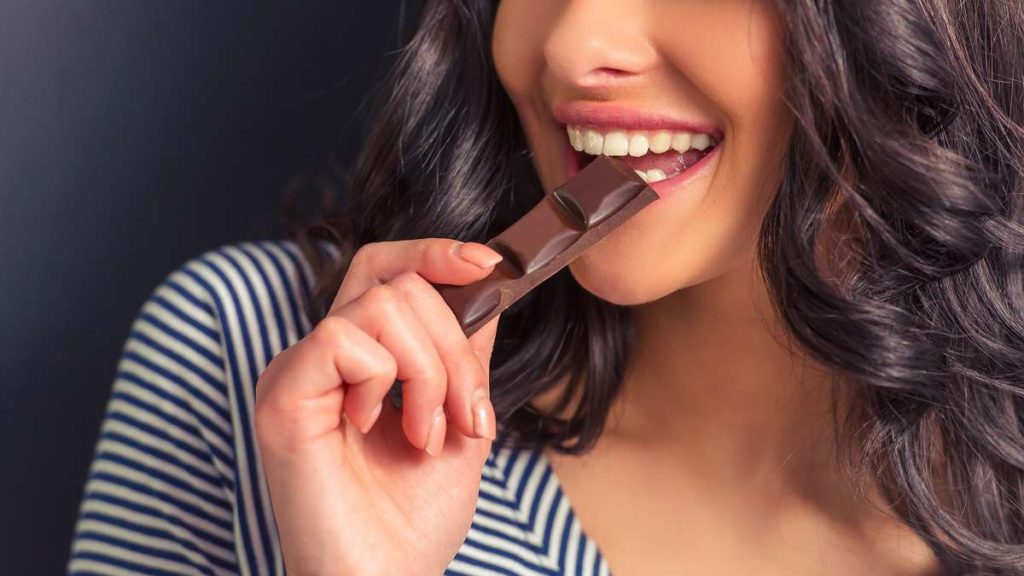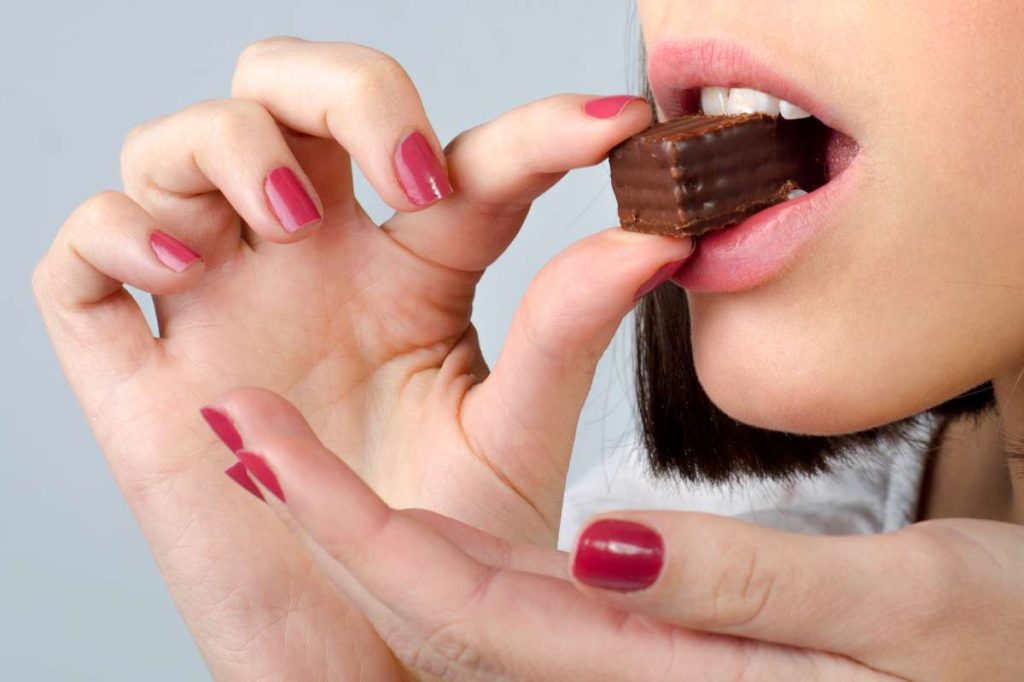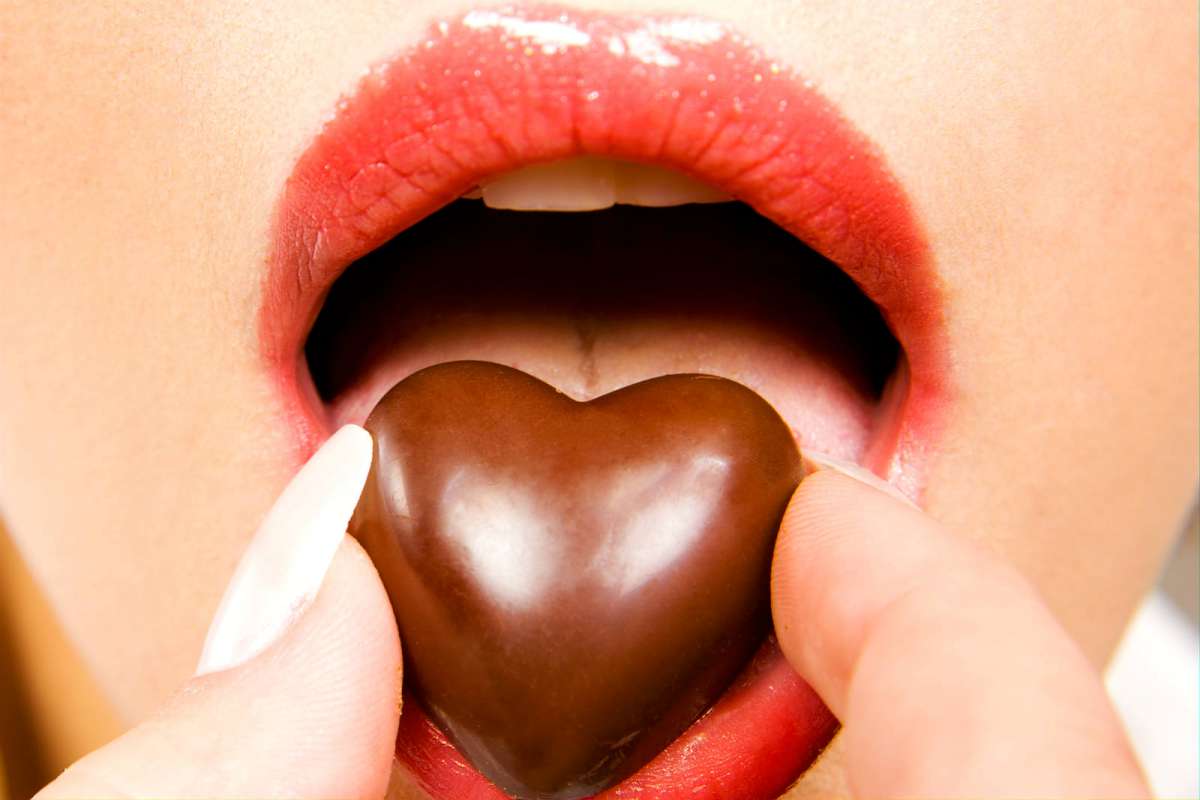The alluring union of sex and chocolate, a match made in heaven for many, while some may claim that chocolate holds aphrodisiac properties, enticing women with its irresistible charm, there’s more to this confectionery than mere myth. In reality, chocolate has a profound impact on our emotions, mood, and even libido.
The reason behind chocolate’s provocative allure lies in its unique chemistry, containing phenylethylamine (PEA) and anandamide, two natural compounds found in dark cocoa, these ingredients trigger the release of endorphins and serotonin, neurotransmitters associated with feelings of pleasure, relaxation, and happiness. This is why many people find solace and comfort in indulging in chocolate, often leading to improved moods.
But what sets white, milk, and 100% cocoa chocolates apart? The primary distinction lies in their varying levels of cocoa content, which directly affects the flavor profile and nutritional content.
White Chocolate, Sweeter Taste & Aphrodisiac Allure
White chocolate, though not technically a true chocolate due to its lack of cocoa solids, is often marketed as a variant that appeals to those seeking a milder experience. Its creamy texture and sweeter taste make it less intense than darker options, but this doesn’t necessarily diminish its aphrodisiac allure.
Milk chocolate, with its sweeter flavor profile, tends to be more palatable for those who can’t stomach the bitterness of dark chocolate. However, milk contains sugars that can cause a rapid spike in blood sugar followed by a crash, potentially leading to feelings of anxiety and unease.
On the other hand, 100% cocoa chocolates hold an entirely different significance, rich in antioxidants and flavanols, these dark confections are said to have cardiovascular benefits and even reduce inflammation. The bitter taste, however, can be off putting for those accustomed to milder flavors.
Unadulterated Thrill Of Pure Dark Bliss
The truth is that each type of chocolate carries its unique virtues, white providing a smoother experience, milk offering an approachable gateway to the world of chocolate, and 100% cocoa providing the unadulterated thrill of pure, dark bliss. Whether you’re seeking comfort, excitement, or simply a delicious treat, it’s up to individual preference which path to take.
For those seeking a culinary adventure that transcends mere indulgence, exploring the diverse spectrum of chocolates can be an enlightening experience. Exploring different flavors and textures allows us to appreciate the complexity of this delectable confectionery, as well as its capacity to evoke deep emotional connections, including the one with our own desires.
Ultimately, the notion that chocolate holds aphrodisiac properties is more a reflection of its profound impact on our emotions than a manufactured marketing ploy.

The Ancient Roots of Chocolate’s Seductive Allure
As we succumb to the allure of rich, velvety textures and decadent flavors, few consider the historical underpinnings of chocolate’s notorious reputation as a stimulant of desire. Delve into the dusty annals of time, and you’ll discover that the Aztecs were among the first to recognize the potent effects of cacao on the human psyche.
Within the sacred temples of Tenochtitlán, the Aztec god Quetzalcoatl was revered as the patron deity of wisdom, fertility, and creativity. The ruling elite would indulge in copious amounts of cocoa, believing it granted them the vigor and potency necessary to conquer their empire. According to legend, Montezuma II’s voracious consumption of cacao was said to have rendered him an insatiable lover, capable of effortlessly seducing his harem.
The Aztecs’ affinity for cacao soon spread throughout Mesoamerica, with various tribes adapting the plant to suit their unique cultural practices. As the Spanish conquistadors arrived, they found themselves entangled in a world where chocolate was not only a luxury but also an instrument of seduction.
Chocolate, Opulence and Refinement
Upon crossing the Atlantic, chocolate became an integral part of European aristocracy, symbolizing opulence and refinement. The myth that chocolate could awaken dormant passions and ignite desire quickly gained traction, as it found its way into the pages of 17th-century literature. The notion that a single piece of chocolate could unlock the gates to forbidden pleasure became a tantalizing prospect for those seeking an escape from the drudgery of everyday life.
As civilizations evolved, so did the art of gifting chocolate, in many cultures, it has become an accepted norm to present chocolate as a token of affection or romance. A carefully curated box of fine truffles or a thoughtfully selected piece of artisanal chocolate is often used to express deep emotions, reinforcing the notion that this indulgence holds mystical powers.
Handcrafted Chocolate, Succumbing To Its Intoxicating Allure
While some argue that these cultural associations are nothing more than clever marketing, it’s undeniable that cacao has an unparalleled ability to transport us to a realm where desire and pleasure reign supreme. Whether we’re savoring the rich aromas of a handcrafted chocolate or succumbing to its intoxicating allure, we’re not merely satisfying our taste buds, we’re tapping into an ancient legacy of mystique and seduction.
In an era where indulgence has become increasingly commodified, it’s worth pausing to appreciate the storied history that surrounds this most alluring of treats. As we indulge in the sweet, velvety depths of chocolate, let us not forget the tantalizing tales that have woven its allure into the very fabric of human experience.
Unveiling the Diverse Realm of Chocolate, A World of Flavors and Textures
Behind the veil of this delectable treat lies a complex tapestry of ingredients, nuances, and subtleties. The myriad forms of chocolate that tantalize our taste buds and ignite our senses can be broadly categorized into three distinct families, white, milk, and dark.
The enigmatic white chocolate occupies a unique position in this hierarchy, composed solely of cacao butter, sugar, and sometimes flavors, it defies the conventions of traditional chocolatiers. This lactose infused concoction may delight the senses with its creamy texture and sugary allure, yet its very essence is bereft of the cocoa solids that define true chocolate.
Milk chocolate, meanwhile, occupies a middle ground, its formulation, which typically includes at least 25% cocoa, sets it apart from white chocolate’s cacao butter monopoly. While this variant may seem innocuous enough, its relatively lower fat content belies a sweetness that can be as overpowering as it is alluring.
Dark Chocolate, Sophistication and Refinement
Dark chocolate, on the other hand, stands as a paragon of sophistication and refinement, dubbed “bitter chocolate” for its pungent flavor profile, this variant must adhere to stringent standards, a minimum cocoa content of 35% and an 18% cocoa butter quotient to be deemed authentic. Those who partake in this rich indulgence are rewarded with a sensory experience that borders on the sublime.
A sobering aspect of these variations is their respective nutritional profiles, white chocolate, replete with simple sugars and devoid of the redeeming qualities of cocoa, should be approached with caution. Milk chocolate’s sugary excesses make it a treat best consumed sparingly. Meanwhile, dark chocolate stands as a nutritional paragon, its high fiber content and antioxidant profile rendering it an unlikely candidate for the most diabolical of diets.
The World of Chocolate, Surrender to It’s Mysteries
As we navigate this labyrinthine world of chocolate, it is essential to acknowledge that each variant possesses its unique character and appeal. The nuances of texture, flavor, and aroma create an almost infinite palette for exploration and experimentation. Whether one’s heart belongs to the creamy allure of white, the indulgent richness of milk, or the austere majesty of dark, the art of chocolate appreciation demands a willingness to explore, to learn, and to surrender to its mysteries.
For in this realm where flavors and textures entwine like tender shoots on an ancient vine, the boundaries between pleasure and prudence blur, and it is here that we find ourselves drawn into a world of unbridled indulgence, a world governed by no rules, only the imperatives of our most primal longings.
Unveiling the Shadows of Dark Chocolate, A Realm of Hidden Virtues
In the realm of culinary indulgences, few treats rival the enigmatic dark chocolate, beneath its sleek surface lies a labyrinth of intricate chemical compounds, some of which hold the key to unlocking a world of unprecedented health benefits.
At the heart of this paradox lies the polyphenol, a potent antioxidant naturally embedded within cocoa’s molecular structure. This dynamic compound serves as a formidable sentinel, defending against cellular stress and the pernicious creep of cardiovascular disease and cancerous growth. The more concentrated the cocoa, the greater its inherent potency, rendering dark chocolate an unlikely champion in the fight against these maladies.
Furthermore, this mysterious confection holds a secret, it’s a veritable treasure trove of magnesium, that most noble of minerals. This essential element plays a pivotal role in mitigating the specter of fatigue, stress, and anxiety, all those pesky ills that can so readily beset our otherwise serene existence.

Dark Chocolate, Subtle, Yet A Profound Influence On Mood
And herein lies the rub, gentlemen, a woman in a tranquil state of mind is, as you so astutely observed, an altogether more… accommodating companion. In this context, it becomes apparent that dark chocolate’s subtle yet profound influence on mood may prove an unexpectedly potent catalyst in certain… social interactions.
While some may view this as little more than a clever marketing ploy, the scientific evidence suggests otherwise. The nuances of dark chocolate’s chemical composition hold within them the seeds of transformation, not merely for our taste buds, but for our very well-being.
In this shadowy realm where indulgence and virtue blur, one cannot help but ponder the darker corners of human nature, can a confection so delightfully decadent be an instrument of redemption? Only time will tell, as we succumb to the siren song of dark chocolate’s mystique.
The Enigmatic Allure of Cocoa, Unveiling the Secrets Behind its Seductive Power
In the realm of culinary delights, few ingredients command as much attention, or inspire as much passion, as cocoa. While its reputation as an aphrodisiac has long been shrouded in mystery, the science behind its effects on the female psyche offers a fascinating glimpse into the complexities of human desire.
At the heart of this phenomenon lies a delicate interplay of biochemistry and psychology, theobromine and caffeine, present in varying degrees depending on the type of cocoa, stimulate blood flow and circulation, thereby triggering a cascade of physiological responses that culminate in feelings of euphoria and heightened arousal.
Yet, it is not merely the stimulatory properties of these compounds that contribute to cocoa’s siren song; rather, it is the presence of phenylethylamine, a natural hormone found in both the brain and dark chocolate. This enigmatic substance serves as a potent catalyst, precipitating the release of dopamine, that most coveted neurotransmitter responsible for the sensation of pleasure.
Dark Chocolate, Heightened Libido?
It is here, in the realm of dopamine’s potent influence, that we find the linchpin to the oft-repeated claims surrounding cocoa’s effects on female desire. The notion that women addicted to dark chocolate experience heightened libido, increased orgasmic frequency, and a more satisfying intimate life has long been debated within the scientific community. While some argue this is nothing more than a clever placebo effect, others propose that the sensory experience of consuming cocoa itself holds inherent pleasurable properties, qualities that can set a positive tone for subsequent interactions.
The intricate dance between pleasure, mood, and intimacy is further complicated by chocolate’s well-documented associations with comfort, indulgence, and love. This deeply ingrained cultural symbolism serves to reinforce its connection to the very fabric of human emotion, thereby fostering an ambience that encourages open communication, trust, and intimacy.
One cannot help but ponder the implications of these findings in the context of modern relationships. While no single indulgence can guarantee a night with a high-end escort, it is undeniable that the sensory experience of savoring chocolate holds a profound impact on our emotional state, one that may prove instrumental in forging stronger bonds and more meaningful connections.
In this nuanced landscape where pleasure, psychology, and physiology converge, we find ourselves drawn into a world of intricate complexities, and it is within this very realm that cocoa’s mystique assumes an altogether different guise, that of a culinary catalyst capable of unlocking the deepest recesses of human emotion.
Thank you for reading!
DISCLAIMER
This post is a little bit of funny, a little bit of knowledge and a little bit about facts, either way, you should always consult a professional regarding, chocolate and the pleasured it may bring!
